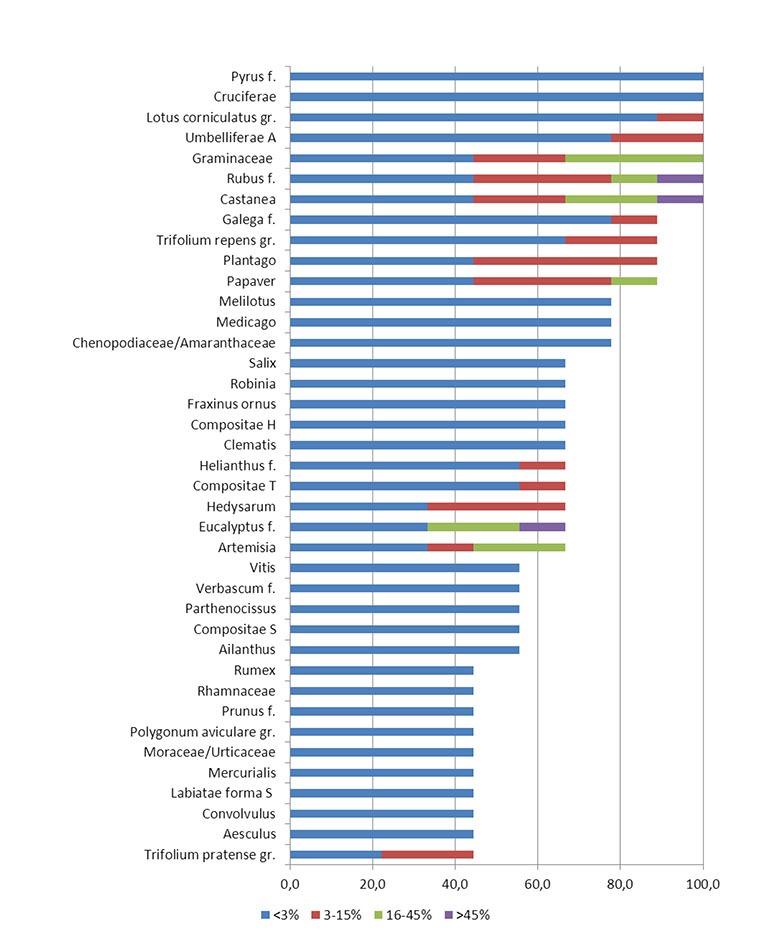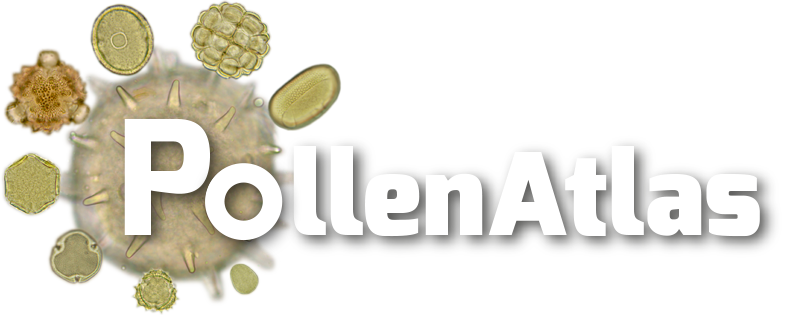Samples identified as honeydew honeys, mainly from different hilly areas, were considered a single group as it is impossible to distinguish, by analytical point of view, the different types of honeydew and also because commercially the sales denomination "honeydew" is the most common without reference to the vegetable or animal origin.
By melissopalynological point of view these honeys are characterized by a variable content of absolute pollen grains, generally higher than 20,000, according to the quantity of Castanea pollen. The ratio indicators of honeydew/pollen grains was generally high or very high, especially if counting is about nectar species excluding Castanea. The ratio indicators honeydew/pollen grains was generally high even if some exceptions were discovered, confirming that this index, although generally useful, cannot be considered an absolute criterion for this type of honey.
The typical pollen spectrum has showed elements common to other honeys of the region (Graminaceae, Rubus f., Cruciferae, Papaver, Castanea, Trifolium repens gr.), with a more constant presence of Umbelliferae A, Lotus corniculatus gr., Pyrus f., Plantago and Galega; Robinia was detected much less frequently.
The honeys are usually produced in areas less intensively cultivated than the plain, but elements typical of agricultural areas were nevertheless detected, such as crop plants, nectariferous and nectarless species (Medicago, Helianthus f. and Vitis in addition to those above mentioned) and weeds (Chenopodiaceae/Amaranthaceae, Artemisia, Mercurialis, Moraceae/Urticaceae and Polygonum aviculare). The characteristic elements of the hilly area of production (as well as Robinia, Castanea, Clematis, Fraxinusornus and Hedysarum) were also detected. A special mention deserves the presence of Eucalyptus, even in a high percentage, a species maybe present because to previous movements of hives; for this type of honey the presence of foreign elements from previous crops is most likely due to the seasonal nature of this production, mainly at the end of the season. In this last case the presence of nectarless pollen plants has been a characterizing element of honeydew honey.
We do not have data that allow to highlight specific elements able to distinguish this type of honey comparing to similar products from other regions of the Po Valley (Lombardy and Veneto); the difference with honeydew honeys produced in central Italy, instead, is appeared to be more evident because abundant and constant Mediterranean indicators are always present.
Honeydew honey pollen spectrum





